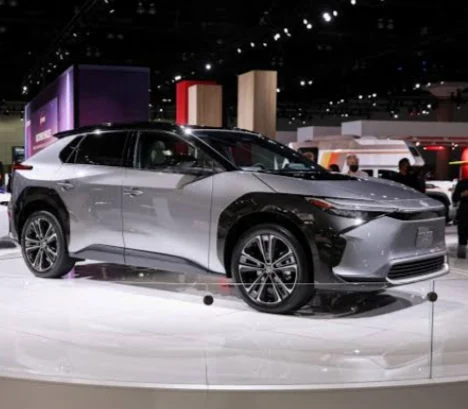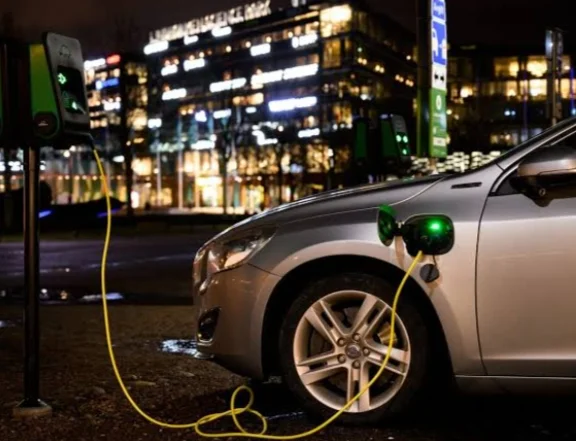The Electric Vehicle Roadmap in Europe: Greening the Way
The European Union (EU) has set ambitious goals for electrifying its transportation sector, aiming to achieve net-zero greenhouse gas emissions by 2050.
A key part of this plan is the European Electric Vehicle Roadmap, which outlines a series of steps to increase the adoption of electric vehicles (EVs) and decrease the use of fossil fuels in transportation.
The Electric Vehicle Roadmap in Europe
| Year | Key Event or Milestone | Impact |
|---|---|---|
| 2010 | Introduction of the European Union's "White Paper on Road Transport" | Outlined the EU's vision for a sustainable transport system, including a shift towards electric vehicles. |
| 2013 | Launch of the "European Alternative Fuels Observatory" | Established a platform to monitor and analyze the development of alternative fuels, including electric vehicles. |
| 2015 | Adoption of the "EU Directive on the Promotion of Clean Vehicles" | Set targets for the deployment of alternative fuel infrastructure and provided incentives for the purchase of electric vehicles. |
| 2019 | Announcement of the "European Green Deal" | Committed the EU to achieving carbon neutrality by 2050, including a transition to electric vehicles. |
| 2020 | Publication of the "EU Strategy for Sustainable and Smart Mobility" | Outlined the EU's vision for a sustainable and smart transport system, with a focus on electric vehicles. |
| 2021 | Introduction of the "EU Regulation on CO2 Emission Standards for Cars and Vans" | Set ambitious targets for reducing CO2 emissions from new cars and vans, incentivizing the adoption of electric vehicles. |
| 2022 | Launch of the "EU Battery Alliance" | Focused on developing a sustainable battery value chain in Europe, supporting the production of batteries for electric vehicles. |
| 2023 | Adoption of the "EU Regulation on Fuel Economy Standards for Heavy-Duty Vehicles" | Set targets for reducing CO2 emissions from heavy-duty vehicles, driving the adoption of electric trucks and buses. |
| 2024 | Continued growth in electric vehicle sales and infrastructure development | The EU is experiencing a steady increase in the number of electric vehicles on the road and is investing in a robust charging infrastructure. |
Key Factors Contributing to Europe's Progress:
- Strong government support: The European Union has played a crucial role in promoting electric vehicle adoption through legislation, incentives, and infrastructure development.
- Advanced automotive industry: Europe has a long-standing and competitive automotive industry, which is well-positioned to develop and produce electric vehicles.
- Environmental awareness: The EU's commitment to reducing greenhouse gas emissions has driven interest in electric vehicles.
- Infrastructure development: Investments in charging infrastructure have made it easier for electric vehicle owners to charge their cars.
Challenges and Future Directions:
- Cost: While prices have decreased, electric vehicles still remain more expensive than traditional gasoline and diesel cars.
- Range anxiety: Concerns about the range of electric vehicles, especially for long-distance travel, may deter some potential buyers.
- Battery technology: Advancements in battery technology are needed to address range anxiety and reduce costs.
- Grid capacity: Ensuring that the electricity grid can handle the increased demand from electric vehicles is a crucial challenge.
Despite these challenges, Europe is well-positioned to achieve its electric vehicle goals and become a global leader in sustainable transportation.
The roadmap's key objectives include:
- Significantly increasing the market share of EVs: The EU aims to have at least 30 million zero-emission vehicles on its roads by 2030, and all new cars and vans sold in the bloc to be zero-emission by 2035.
- Investing in EV infrastructure: The EU is investing billions of euros in building a comprehensive network of EV charging stations across the continent. This includes both public fast-charging stations and slower chargers for homes and businesses.
- Supporting research and development: The EU is funding research into new EV technologies, such as batteries with longer ranges and faster charging times.
- Making EVs more affordable: The EU is providing financial incentives for consumers to buy EVs, such as tax breaks and subsidies.
The European Electric Vehicle Roadmap is a ambitious plan that will require significant investment and effort from both the public and private sectors. However, if it is successful, it could help to transform the EU's transportation sector and make it more sustainable.
Here are some additional details about the roadmap:
- The roadmap was first published in 2018 and has been updated several times since then.
- The roadmap is based on a comprehensive analysis of the challenges and opportunities for electrifying road transport in Europe.
- The roadmap includes a detailed action plan with specific targets and timelines.
- The roadmap is being implemented by a variety of stakeholders, including the European Commission, EU member states, and the private sector.
The European Electric Vehicle Roadmap is a significant step towards a more sustainable future for transportation in Europe. It is a ambitious plan, but it is one that is necessary to meet the EU's climate goals.
The Electric vehicle production statistics in Europe
Here's a summary of electric vehicle production statistics in Europe, without pictures and with additional data:
Overall growth:
- New registrations of electric vehicles in Europe in 2022: almost 2 million, representing 21.6% of all new car registrations.
- Market share leaders:
- Norway: 88.6% of new car sales in 2022 were electric.
- Germany: 31.4% market share.
Production by country:
- Top producers: Germany, France, UK, Czech Republic.
- Eastern Europe emerging as a new hub: Hungary, Slovakia, Poland.
Battery production:
- Bottleneck in supply chain: Slower battery production growth than EV production.
- Investment in new battery factories across Europe: Germany, Sweden, France.
Future outlook:
- Continued rapid market growth: Driven by stricter regulations, incentives, and falling battery costs.
- Emergence of new EV startups: Challenging established automakers.
Electric Vehicle Production Statistics in Europe (2022)
| Statistic | Data | Note |
|---|---|---|
| New EV Registrations | 2 million | 21.6% of total new car registrations |
| Top Market Share Countries | 1. Norway | 88.6% EV share |
| 2. Germany | 31.4% EV share | |
| Top Production Countries | 1. Germany | |
| 2. France | ||
| 3. United Kingdom | ||
| 4. Czech Republic | ||
| EU EV Market Size (2030 Projection) | 15-20 million vehicles/year | |
| Total EVs on European Roads (2022) | Over 5 million | |
| New EV Registrations (2021) | 1.06 million | 10.6% of total new car registrations |
| Battery Production Bottleneck | Yes | Supply chain lag behind EV production |
This table summarizes the key statistics I provided earlier.
Additional data:
- Electric vehicle registrations in Europe in 2021: 1.06 million, representing 10.6% of new car registrations.
- Total number of electric vehicles on European roads in 2022: Over 5 million.
- Projected European EV market size in 2030: 15-20 million vehicles per year.
Resources for further information:
- European Automobile Manufacturers' Association (ACEA): https://www.acea.auto/
- European Commission: https://ec.europa.eu/eurostat/cache/infographs/energy_2020/images/pdf/pdf-energy-eurostat-2020.pdf
- Statista: https://www.statista.com/statistics/804772/sales-volume-electric-vehicles-eu/
With continued investment and effort, the roadmap has the potential to make a real difference in the fight against climate change.



